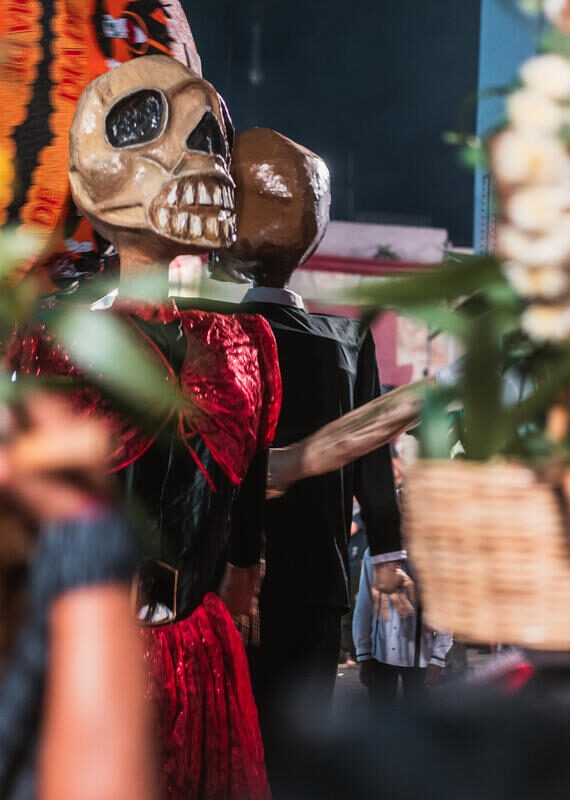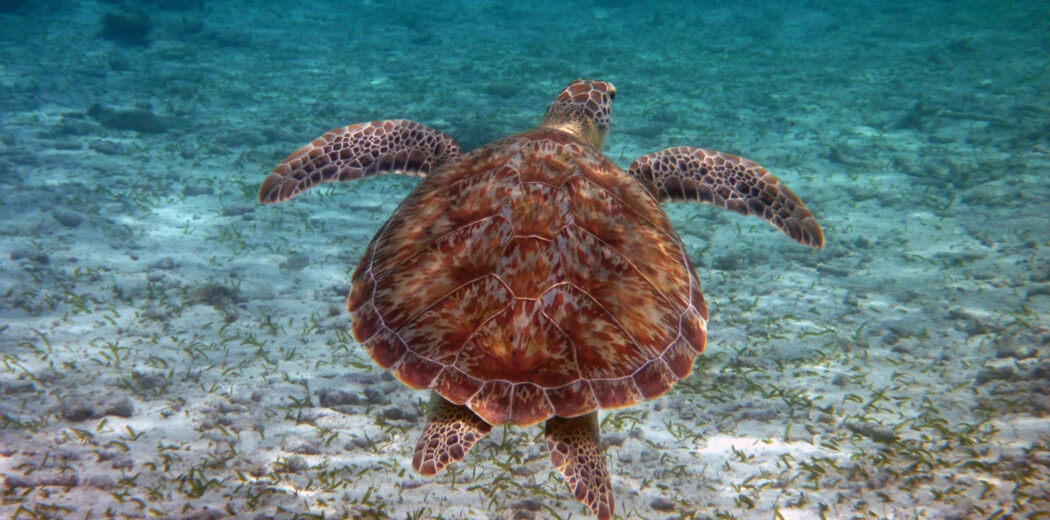Latin America is home to 33 countries, nearly 500 languages and hundreds of different Indigenous groups. Understandably, with such a diverse continent comes a diverse range of celebrations. You can travel to Mexico, Peru, Ecuador, Brazil, Belize, Argentina, Chile and Colombia to discover, watch and take part in flower, tango and chocolate festivals, religious celebrations and much more.
It’s pretty much impossible to take part in them all, so our experts have narrowed the list down to five of their favourite festivals in Latin America.

1. Día de los Muertos – Oaxaca, Mexico
Día de los Muertos, or Day of the Dead, is a UNESCO-recognised celebration dedicated to honouring deceased family members. The holiday originated in the Aztec era as a way to keep the deceased alive in memory.
Day of the Dead’s spiritual home is Oaxaca, but it’s celebrated in cities and towns across Mexico with traditional makeup, parades and offerings to lost loved ones. Common offerings include the family’s favourite meal, pan de muerto (sweet bread) and sugar skulls.
See more: Beyond the festivities, you can also visit Mexico’s incredible archaeological sites and learn how local artisans create traditional crafts like pottery and textiles.

2. Inti Raymi – Cusco, Peru
Peru’s biggest festival, Inti Raymi, is a nine-day celebration that pays homage to Inti, the sun god. It takes place on 24th June each year, shortly after the winter solstice,in Cusco, and has been the most important date in the city’s events calendar for over 500 years.
On the day, participants from across the country gather to perform the rituals of Inti Raymi. Speeches praising the sun are followed by processions and the faux sacrifice of a llama, resulting in a truly extraordinary festival. Although Cusco is most often visited as a travel hub on the way to Machu Picchu, the city itself also has lots to offer.
See more: Take advantage of your time in Cusco to visit the archaeological sites of Sacsayhuamán and Qorikancha, or take a day trip to the traditional village of Huasao.

3. Chocolate Festival – Toledo, Belize
In the far south of Belize, emerald rainforest runs across the mountainous countryside and winding rivers flow into the Caribbean Sea. Within Belize’s southernmost district, Toledo, lie cacao plantations; locals claim that the terroir gives their chocolate a unique flavour and aroma.
To celebrate the region’s cacao, boutique chocolatiers and ancient Maya culture, Toledo hosts the three-day Chocolate Festival of Belize. Kicking off on 22nd May, the fiesta encompasses a street fair, chocolate tours, chocolate and wine tastings, music and cultural performances in Punta Gorda and its surrounds. A can’t-miss festival for chocolate lovers.
See more: Dive even deeper into this part of Belize by exploring Blue Creek Cave, visiting a local spice farm and learning about the Maya and Garifuna cultures.

4. Flower Festival – Medellín, Colombia
Colombia’s Feria de los Flores (Flower Festival) is held in Medellín from late July to early August each year. The Feria de los Flores dates back to the 1950s, and today Colombians from near and far come to view the city in full bloom. The standout celebration is the parade, known as the Desfile de Silleteros.
This procession sees locals carrying small floral floats on their backs as they make their way through Medellín’s streets. There’s also plenty to explore beyond the parade, with exhibitions at the Botanical Garden, dance performances and a horse cavalcade (la Cabalgata) all adding to the atmosphere of revelry.
See more: Discover Medellín with your own expert guide, from the phenomenal Museum of Modern Art and Museum of Antioquia to the vibrant neighbourhood of Comuna 13.

5. Carnival – Rio de Janeiro, Brazil
An integral part of the Christian calendar, Carnival is celebrated during the week before Lent in many countries around the world – but no Carnival celebration is bigger than Brazil’s. The party atmosphere throughout the country is palpable, and the Rio de Janeiro Carnival also happens to be the world’s biggest festival.
Samba parades, street parties and carnival balls have attracted 2 million revellers each year since the celebrations began in 1723, and allow for truly experiential travel. Revellers can hang out in Copacabana, dance the night away or simply spend time admiring the extravagant outfits that fill Rio’s streets throughout the celebrations.
See more: Learn about the history of samba and try on traditional Carnival costumes on a tour of Rio, or head outside the city to Tijuca National Park, Buzios or Paraty.

6. Semana Santa – Quito, Ecuador
Semana Santa, or Holy Week, is one of the most important religious festivals in South America and beyond. During the last week of Lent leading up to Easter, the streets of Quito, Ecuador come alive with one of the world’s most impressive Semana Santa celebrations. The holiday is also observed in smaller cities across the country.
The highlight of the Holy Week in Quito is the procession of Jesús del Gran Poder, in which a 17th-century wooden figure of Jesus is carried through the streets. This is a relatively serious celebration compared to some other Latin American festivals, but the massive crowds, solemn parades and purple-hooded penitents are worth witnessing.
See more: Sample traditional Ecuadorian cuisine and sweets on Calle La Ronda, or delve into the country’s striking natural beauty at the craters of Quilotoa and Pululahua.

7. Tango Festival – Buenos Aires, Argentina
Argentina has plenty of claims to fame, but tango is certainly among the most iconic. Unsurprisingly, the world’s largest tango festival is held in Buenos Aires. Every year in August or September, the city hosts several days of tango shows, concerts, classes, competitions and more as part of the Buenos Aires Tango Festival and World Cup.
If you’ve ever wanted to try this famously intricate form of dance, this is the perfect opportunity. And if you’d rather watch the professionals do their thing, learn about the history of tango or simply enjoy the atmosphere of a traditional milonga, there’s plenty to keep you entertained as well. Join a private class or a tango-themed city tour to make the most of the festival.
See more: Hungry after all that tango? Make sure to try empanadas, asado (barbecue), choripan (a grilled chorizo sandwich) and alfajores (sandwich cookies filled with dulce de leche).

8. Tapati Festival – Easter Island, Chile
Tapati has to be one of the most unique South American festivals – and not just because of its farflung location. Easter Island is technically part of Chile, but it takes about five and half hours to reach it by plane from Santiago. Although this may deter some travellers from making the trip, the island fills up every year for this incredibly fun celebration.
Usually held in the first half of February, Tapati honours the traditional culture of Rapa Nui (the island’s Polynesian name). It includes various athletic competitions, singing and dancing contests and the famous haka pei: an extreme sport that involves sliding down a steep slope at a staggering speed on a sled made from banana trunks.
See more: Rapa Nui is packed with both natural and cultural wonders, including the monolithic moai statues scattered across the island. We also suggest a scenic cruise around the coastline.

9. Fiesta de la Candelaria – Puno, Peru
The city of Puno, set on the shores of Lake Titicaca in southern Peru, is the setting for the annual Fiesta de la Candelaria: a festival that blends Catholic and Indigenous heritage to celebrate the city’s patron saint. The Virgen de la Candelaria, also called Mamacha Candelaria, is honoured with music, dancing, parades and elaborate traditional clothing.
Occurring every year in early February, the Fiesta de la Candelaria is the country’s largest festival and has earned the distinction of Intangible Cultural Heritage of Humanity from UNESCO. The combination of Catholic symbols and native Andean traditions makes it one of the most eclectic and fascinating festivals in Latin America.
See more: The main attraction here is undoubtedly Lake Titicaca and its islands. You can even sail across its waters to Bolivia – or board the Belmond Andean Explorer to reach Cusco or Arequipa in style.
Trip inspiration
Jacada travel guides
Whatever you want from your Latin America adventure, our travel designers are here to help:
















